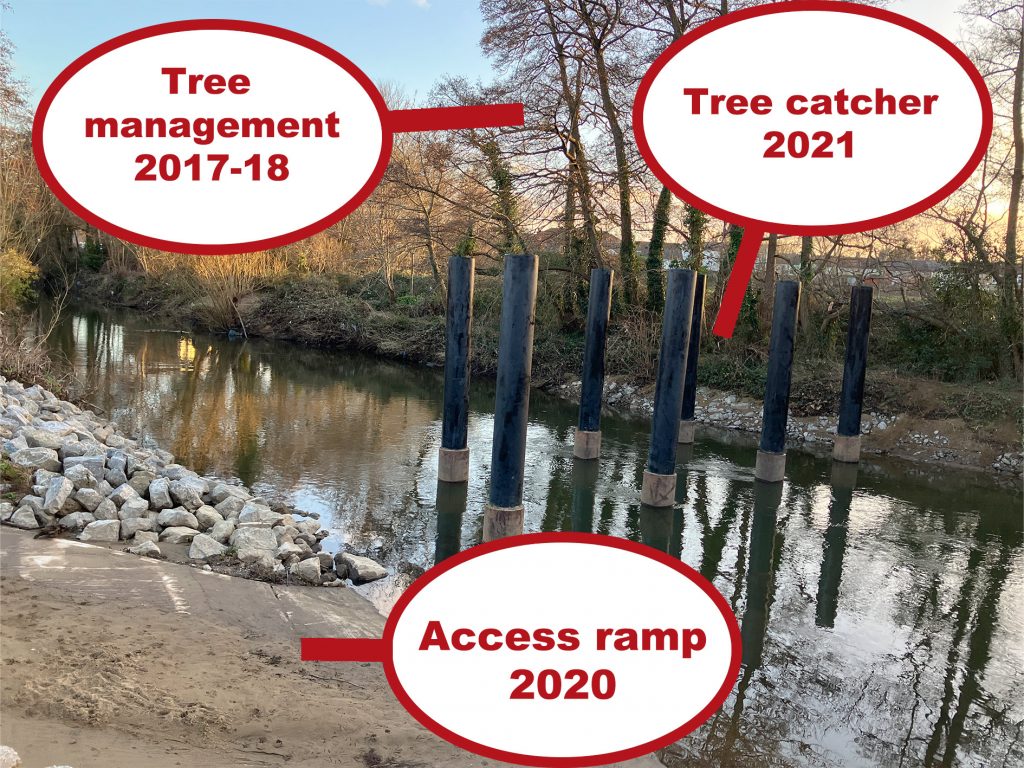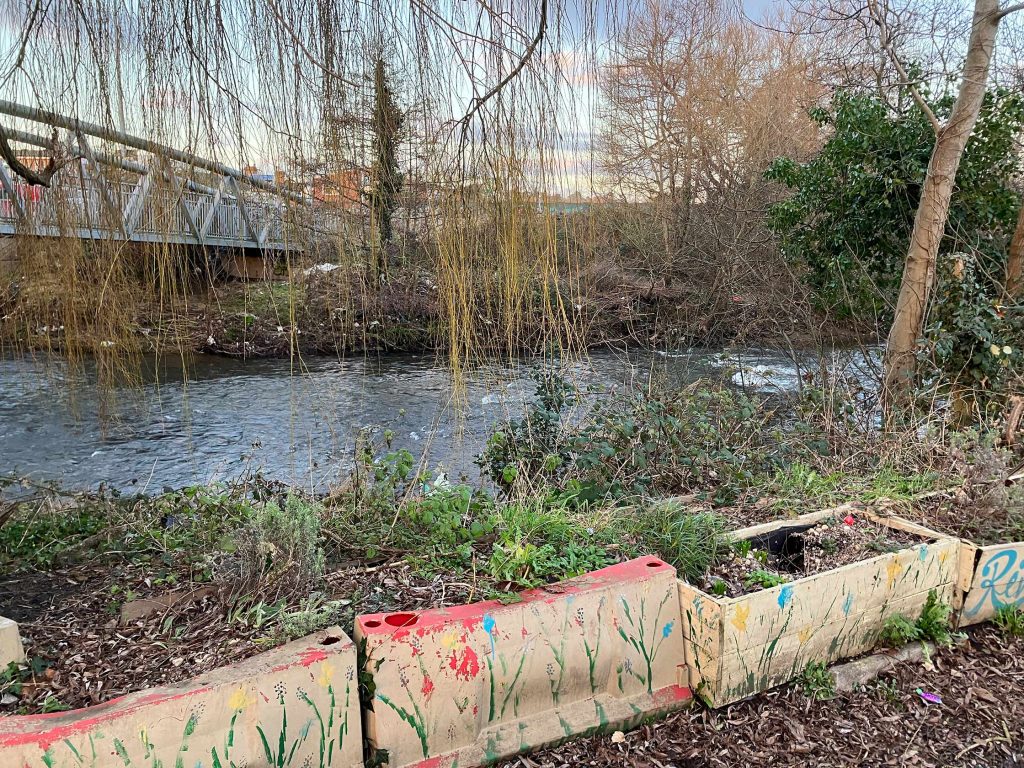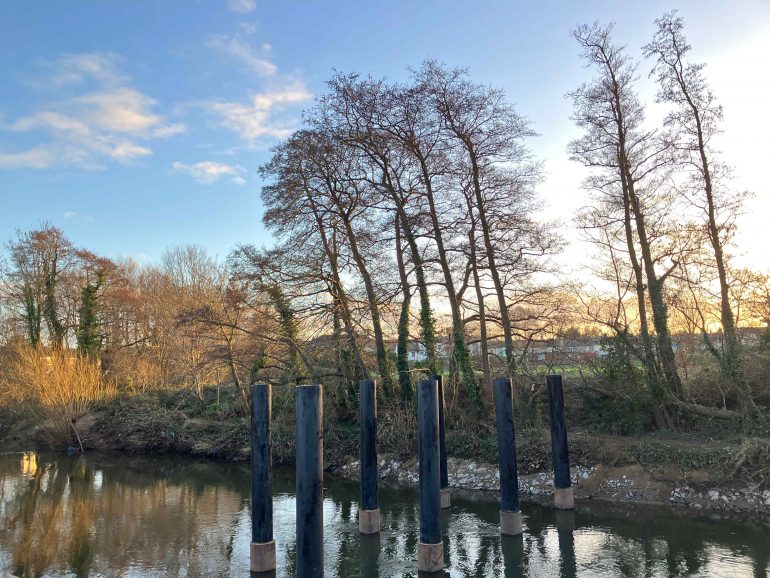But Natural Resources Wales estimates that the ‘innovative’ tree catcher system already reduces risk for 490 homes
COUNCILLORS from three wards in west Cardiff have appealed to Natural Resources Wales for greater flood defences around Ely Bridge.
Ely River broke its banks for the second time in three years this month – despite an “innovative” flood defence installed in 2021 that set the Welsh Government back almost £1 million.
Flood risk increases significantly when the river is congested with debris — especially large objects like branches and trees.
In 2017 and 2018, Cardiff Council completed “tree management works” to reduce the risk of large objects blocking the river while recognising that further work was needed.
In 2020, they built an access ramp so that flood responders could more easily remove blockages when the water levels were low.
Consisting of seven upright poles in the river, the tree catcher is designed to catch floating debris so that the water can pass under the bridge — a few hundred metres downstream — without getting blocked.
Natural Resources Wales says the Ely tree catcher is the first of its kind it has built in Wales. Since its installation in December 2021, they estimate that it has reduced flood risk for 490 homes near the pinch point at Ely Bridge.

All seven Labour councillors representing the wards of Caerau, Ely and Fairwater signed an open letter to NRW asking about plans to better protect the community from floods.
“In the past years, the river has burst its banks twice, damaging properties and meaning hours of work for Cardiff Council officers in clean-up operations,” the councillors wrote.
Caerau Councillor Peter Bradbury told The Cardiffian that the tree catcher was “never meant to be the final solution to the problem”.
“Natural Resources Wales need to come out, have a look and see what can be done to protect the people.
“People say climate change is not discriminate but it is. It’s poorer areas in this country and poorer countries across the world that are going to be affected by it.”
The councillors highlight the investment at Roath Brook which bought embankments, flood walls and a bridge replacement.
“Living in fear”
Julie Cacicia has lived on the aptly-named Riverside Terrace for more than 30 years and says she does not want to leave despite the risks.
She admits that it would be difficult to sell her house with its proximity to the river and the insurance costs that would come with it.
“You’d get nothing for your property,” Julie says.
Some houses on Riverside Terrace are over a century old, says Coun Bradbury, and are ill-equipped when the river breaks its banks at Ely Bridge.
Before the road flooded this month, Julie’s neighbour formed a makeshift barricade with plant pots. Residents say that they were each given two sandbags to defend their home.

Maya Patel owns an off-licence on the corner of Riverside Terrace, by the bridge. She also owns a house on Mill Road on the opposite side of Cowbridge Road West that is equally at risk to floods.
Maya has been trying to sell the property for a number of years but there are no buyers.
She remembers receiving the flood alert at 10pm and says that terrified residents stayed on the road until 1am to watch the water.
“It’s about time they make a solid wall or something to protect the people. People who are living opposite the river are living in fear.”
Natural Resources Wales says that Cardiff benefits from coastal and river flood defences — including the Cardiff Bay Barrage — but they are no “silver bullet” to protect properties in high-risk areas.
“We will never win the war against the forces of nature. There has to be a fundamental consideration by governments, flood risk authorities and communities at risk of flooding of the very stark choices before us on how the risks are managed and delivered within the resources.
“NRW will always work with local communities to identify the best combination of measures to tackle specific threats.”



